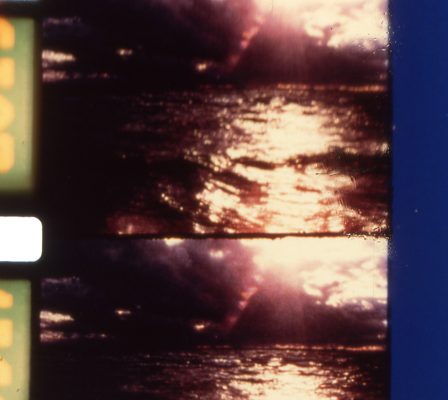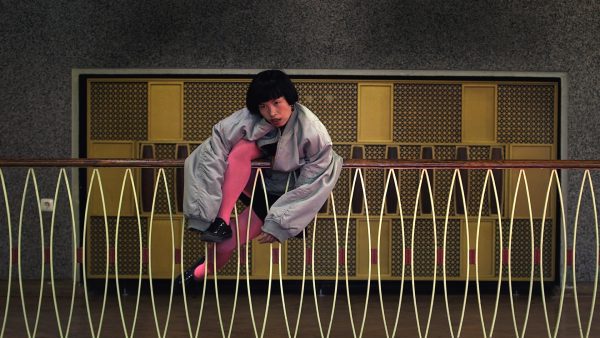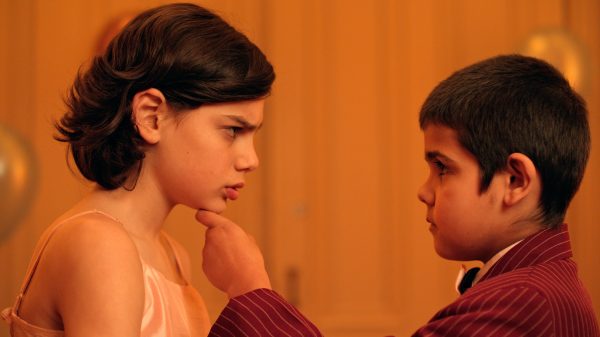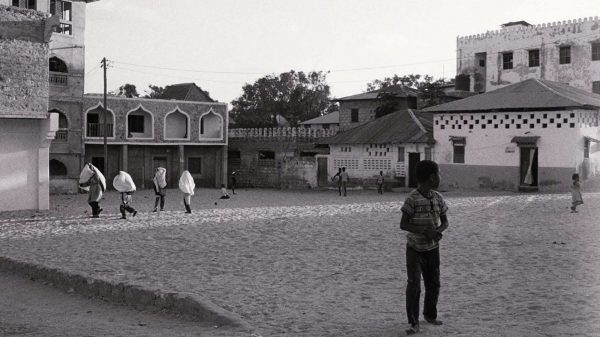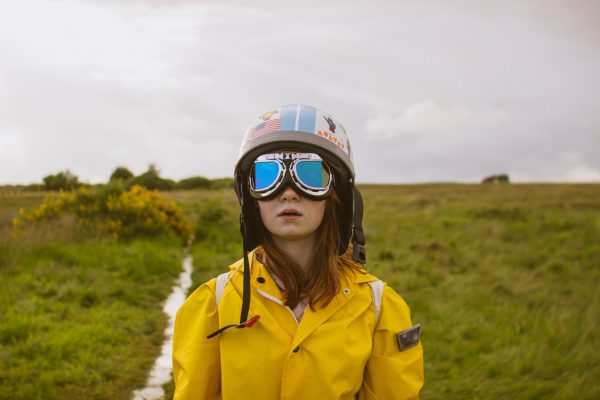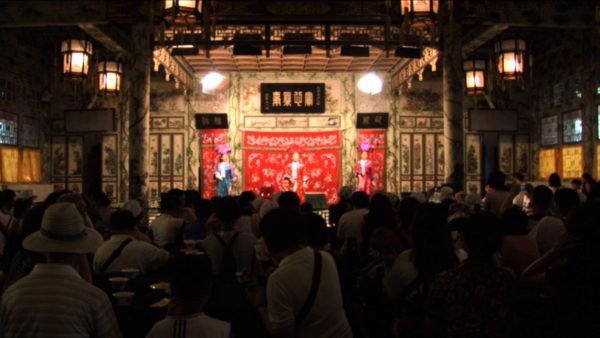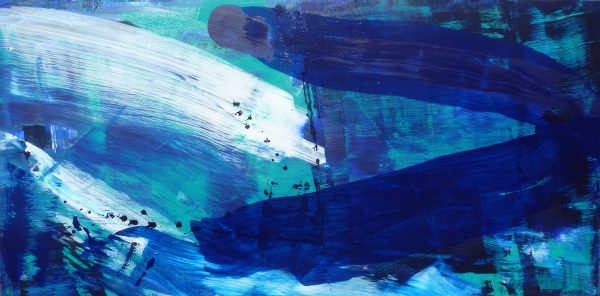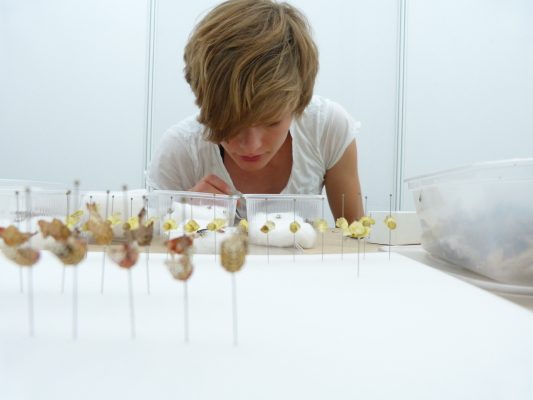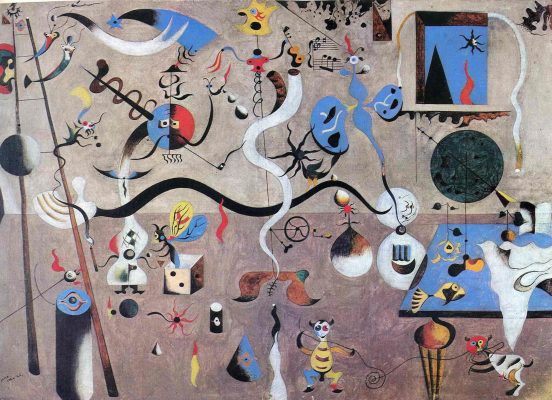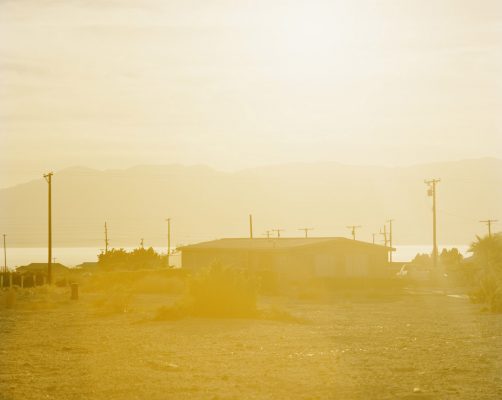Such film festivals – those extraordinary clusters of images, transports of light, of virtual worlds scattered across a real geography – pale in scale when considered next to the project of the www.
Gareth Evans, Jurist at the International Short Film Festival at Oberhausen, 2001
The first postal train ran between Liverpool and Manchester in 1830. Thomas De Quincey’s ‘On the English Mail-coach, or the Glory of Motion’ (1849) describes the new technology as little more than glorified catering equipment:
Tidings, fitted to convulse all nations, must henceforwards travel by culinary process; and the trumpet that once announced from afar the laurelled mail, heart-shaking, when heard screaming on the wind, and advancing through the darkness to every village or solitary house on its route, has now given way to the pot-wallopings of the boiler.
The essay, in the Tory Blackwood’s Magazine, nostalgically associates the mail-coach with glamour, danger, and the news of Waterloo ending Napoleon’s European domination as the sword-arm of the French Revolution. From the other side of the industrial revolution, and the opposite end of the political spectrum, China Miéville likes trains, and makes them the narrative drive of his recently published October: The Story of the Russian Revolution. They hurtle Lenin and the Romanovs inexorably across the vast spaces of Eurasia in 1917, and make the transfer of ideas and information more tangible than the early telegraph equipment with which they coexisted. As the civil war spread in 1918, locomotives pulled propaganda cars with the equipment to make and project film across the continent. One passenger in a Red train, pioneering film theorist and director Dziga Vertov, reported that peasant audiences unused to ‘the taste of film-moonshine’ didn’t respond to Hollywood-style linear narrative, but they did perk up and stare at the screen when people like them appeared on it.
‘The movie camera was invented in order to penetrate deeper into the visible world, to explore and record visual phenomena,’ Vertov wrote in ‘Provisional Instructions to Cinema-Eye Groups’. Because it was invented when capital ruled every country in the world, the camera was used to entertain or divert workers, and ‘under the electric narcotic of the movie theatres, the proletariat, more-or-less starving and jobless, unclenched its iron fist and unknowingly submitted to the corrupting influence of the masters’ cinema.’ Vertov turned the experience of the propaganda trains into the ‘The Factory of Facts’, a 1926 manifesto for a politicised, participatory cinema in which audiences could recognise themselves:
Filming facts. Sorting facts. Spreading facts. Agitation with facts. Propaganda with facts. Fists made out of facts. Lightning bolts made out of facts!
Mountains of facts.
Whirlwinds of facts. And separate little factlets.
Against film cinema-sorcery.
Against cinema mystification.
And for the authentic cinematisation of the worker-peasant U.S.S.R.
In May 2017, visitors to Oberhausen in Germany’s Ruhr valley were greeted at the train station by hot pink banners advertising the 63rd edition of the city’s International short film festival. Founded in 1954, the festival is probably still best-known for the 1962 ‘Oberhausen Manifesto’, described on the website as ‘a crushing diagnosis of the German film industry’; a ‘license to create a whole new German film.’ The theme of the programme for 2017, ‘Social Media before the Internet’, featured film, television and video works, all of which explored interactive technology from the 1960s to the ‘90s. The theme provided a fascinating context to the dizzyingly amount of various competitions and programmes, into which 499 films from 58 countries were organised. These included, amongst others, awards for music videos (‘MuVis’), and a special category for German short filmmakers, as well as recalling archival material looking at the future of computers and the internet.
The theme’s curator, Tilman Baumgärtel, started his catalogue essay with Vertov and the propaganda trains as an example of an early attempt to make new media social. The film programme itself started later, with work made in parallel to the ciné-tracts Jean-Luc Godard, Roger Vadim and Claude Chabrol produced in Paris around May 1968, critiquing contemporary media and who they serve, and advocating more participatory alternatives.
For Women: Chapter 1 (1971) was directed by Cristina Perincioli as a graduation piece from the German Film and Television Academy (DFFB). She collaborated with a group of housewives and shop assistants on a script which sees them tiring of their boss’s preferential treatment of the only other male employee, triumphantly going on strike, and showing the men how helpless they are without underpaid female labour. When, in Max Willutzki’s Tenant Solidarity (1970), a bailiff asks the crew with their massive Super-8 camera and microphone who they’re filming for, they reply ‘for The Märkisches Viertel’ — for the estate they are filming rising up as one to prevent the eviction of a large working-class family who can no longer afford the rent.
The argument not just for cinematic representation, but for media by and of the people who consume it, becomes clearer in Harun Farocki’s Their Newspapers (1968). The film is an indictment of the Springer press group, which controlled popular German tabloids including the Berliner Zeitung and the Bild Zeitung, and its reactionary manipulation of the public. At one point, we see a peephole cut in a newspaper to allow passers-by to be spied on, and a reward for readers who write in with information is read out as a voiceover. A Tintin cartoon trope becomes a political metaphor for the newspaper as instrument of surveillance as much as misinformation. Farocki’s The Words of the Chairman (1967) suggests a response, realising the idea that Mao’s words can be weapons by folding pages of the Little Red Book into darts and throwing them at cartoon bourgeois diners.
One of the sub-themes of ‘Social Media before the Internet’ is the role of artists, galleries and art festivals. In 1974, at the Ronald Feldman Fine Arts gallery in New York, Bill Viola filmed a conversation between his fellow artists Douglas Davis, Joseph Beuys and Nam June Paik; a brilliant shambles which takes in the possibilities of television, video and satellite communications. Davis chaired, in a trucker moustache and t-shirt; the fur collar and hat Beuys is wearing over his cargo-vest waistcoat has more to do with his visual identity as an artist than the temperature in the studio — I can just about see sweat appearing on his face despite the graininess of the footage. Paik, in a baggy jacket and scarf, makes the point that for TV to be two-directional is more natural than for it to be one-directional, because radar preceded it. Baumgärtel’s catalogue tells us that this conversation ‘invent[ed] the internet’. It didn’t on a technological level – one of its forerunning technologies, ARPANET, had sent its first message in 1969 – but it did help expand the horizons of what might the internet might be. If we can talk of people or artists ‘reinventing’ themselves, these methods of communication had as yet to find a stable public identity, and ‘invent’ is the correct verb.
Paik places the conversation in the context of the oil crisis which had begun in 1973, and imagines a future in which interactive video technology would reduce the need for business travel. It is noticeable, in some of the festival talk sessions exploring radical participatory ideas from the ‘80s, how much they have been subsumed into the language and gestures of the banal corporate HR exercise: handouts and props on seats, the raising of hands, the break-out session and feedback. The political relationship between art and technology in Paik’s suggestions is markedly different to that sketched by Vertov or Bertolt Brecht, whose Marxism led him to suggest in 1932 that radio could be:
the finest possible communication apparatus in public life, a vast network of pipes. That is to say, it would be if it knew how to receive as well as to transmit, how to let the listener speak as well as hear, how to bring him into a relationship instead of isolating him.
Returning to the 1974 conversation, Beuys’s main contention is that we need to enlarge the idea of art as we enlarge the idea of science; accordingly, he spins out to telepathy and talking to plants, as Paik gets distracted by the lights and worried that the recording isn’t working. Davis, who would go on to create a ‘classic’ of Internet art: The World’s First Collaborative Sentence (1994), now displayed in the Whitney Museum of American Art, tries to bring them back on track. He describes the possibility of a global parliament, with six to seven thousand participants all over the world.
Baumgärtel presents A New Mayor for Freiburg (1982) a way of thinking about the effect of technology on democracy. It’s a carnivalesque video recording of a mayoral hustings with audience members blowing whistles and waving flags to interrupt the serious candidates, and wildly cheering the less serious ones: a colourfully dressed ‘athlete’ who campaigns on a promise of ‘sports, games, excitement’, and a character with a fake nose and bowtie who sets clockwork toys running down the table, takes a teddy bear to the podium and delivers a speech of meaningless Dadaist noises in the rhythms of impassioned rhetoric. Baumgärtel suggests this ‘seems like an early example of deliberate, provocative “trolling” of a situation of collective communication.’ I’m unconvinced by this. If the communication is collective because it is an open, town-hall style debate with the possibility of audience participation, then it has been thus since the dawn of democracy; the presence of the video camera may offer the protesters an enhanced platform for making the existing candidates look ridiculous, but only to an audience whose sole ability to reply is through the ballot box or through the laughter which rolled through the cinema at Oberhausen and reverberated back from the screen.
The flat impermeability of that surface is a repeating trope. In 1977, Paik, Beuys and Davis all gave TV performances to be broadcast by satellite from Documenta 6 in Kassel; Davis had the final slot. It’s wildly unfair to poke fun at someone from the vantage point of technology that he helped to develop, but Davis doesn’t have the natural theatricality of Beuys or John Berger. You might argue this is a virtue in a performance which is about removing, rather than sustaining illusion. Either way the recording of his performance, entitled The Last Nine Minutes, and shown as part of the Oberhausen programme, is now as funny as it is perception-altering. Davis has a ticking timer around his neck as he approaches the camera; there’s a screen in front of it with hands placed as though from a first-person, viewer’s point-of-view. They wave and bang to attract Davis’s attention; to try to break through. At one point Davis scratches the screen with a blade, as if to cut through it: the screen, it suddenly becomes clear, is part of a family of surfaces which includes the paper with the eyeholes in Their Newspapers, and the twenty-first-century touchscreen device which tracks you as you use it.
The telescreens in 1984 are somewhere in that family too. In Good Morning Mr Orwell, Nam June Paik joyously realised his previous 1969 declaration to ‘to shape the TV screen canvas as precisely as Leonardo, as freely as Picasso, as colourfully as Renoir, as profoundly as Mondrian, as violently as Pollock and as lyrically as Johns’. Televised for New Year’s Day 1984 via satellite, using a conference link between New York and Paris, and now available on YouTube, the broadcast starts with Laurie Anderson and Peter Gabriel performing ‘Excellent Birds’ (chorus: ‘this is the picture’), and includes contributions from John Cage, Arthur Russell, Beuys, and the scriptwriters, Leslie Fuller and Mitchell Kriegman. Allen Ginsburg yodels, and Charlotte Boorman plays a cello Nam June Paik has made out of televisions. At one point Merce Cunningham dances in front of footage of Salvador Dali as he sits in front of an image of Chairman Mao. Rather than a warning about totalitarianism, Paik described it as a collection of ‘positive and interactive uses of electronic media which Mr Orwell, the first media prophet, could never have predicted… a global disco’. Rather than from front-to-back, the imaginary Brechtian third wall of screen-surface breaks from side-to-side, as the New York presenter, George Plimpton, affects clinking champagne glasses with his French counterpart, Claude Villers.
In Gerd Conradt’s Fernsehgrüße von West nach Ost [Televisual Greetings from West to East] (1986), the split-screen composition develops with the aid of another technological predecessor, the postcard. It divides horizontally by the sender/receiver side, and then spins round to reveal ‘greetings’ across the more substantial screen of the Iron Curtain. Conradt – who was present at the screening and discussions in Oberhausen – contacted people who had fled East Germany over to the West, and recorded their messages to those they had left behind. They range from a pop song by the son of an East German military officer, a man at a dinner table advising fellow DDR citizens to stay where they are, and two young women eating a meal and offering it to the viewer, as though redirecting Plimpton and Villers’ transatlantic New Year’s cheers. In one message, a couple travel on the U-bahn through Berlin, nervous as they realise they are passing back underneath the border. ‘Like the YouTubers of our time’, Baumgärtel argues in the catalogue, these people ‘use the medium to cultivate their images and to deliver a personal message’. This is a more convincing argument than trolling at the mayoral hustings, but unlike laptop-made vlogs, the Fersehgrüße still relied on hardware – cameras and editing and broadcast equipment –in the hands of a group that, regardless of its politics, was still a minority.
The digital subculture of mailboxes which developed in the 1980s was one response to this issue. As Jason Scott explored in his BBS: The Documentary (2005) series, they were known as Bulletin Board Systems in the US and, permitted a degree of user autonomy – at least to the computer-literate – from which Baumgärtel traces the origins of Anonymous, 4Chan, Reddit and Wikileaks. Piazza virtuale was a utopian employment of this technology produced within the structures of Documenta 9 in 1992. For 100 days, the Van Gogh TV company oversaw evening broadcasts to Europe, Japan and North America, in which viewers could participate by using phone keypads to direct something on the screen – a variant of the ‘Snake’ game on the mobile phones of the late 1990s – or via fax, chat, and temporary Piazzetta mini-studios across Europe. In 1993, the director Utta C. Hoffmann made a film documenting the project, contrasting the ‘normal’ state of TV in which the viewer is ‘condemned to silence; to solitude and passivity’ to ‘another vision for TV, in which the viewer is the star of the programme’.
At one of the ‘Podium’ discussions of ‘Social Media before the Internet’, an audience member questioned the attitude to history suggested in the title. Baumgärtel insisted that he was not interested in presenting these works and their makers as primitive predecessors of the contemporary. So linear a narrative would jar with the aesthetic sympathies of the Oberhausen juries, which tend more towards texture, ideas, and the unexpected. There’s also a danger in turning this into something so old-fashioned as a Whig history of inexorable progress, particularly given that though filmmaking equipment available to YouTubers is more decentralised, the mechanisms for sharing it are not. It’s by no means certain, for instance that LÄSBISCH-TV – ‘the first lesbian TV show on the planet’ – would be broadcast uncensored by YouTube in the way it was broadcast by Berlin’s FAB network from 1991 to 1993, and the manifestations shown as part of the programme are full of a collaborative hope and technological wonder which feels very distant from the contemporary state of the internet.
*
In drawing largely from German archives with some American inclusions, ‘Social Media before the Internet’ is considerably less international than the rest of the festival. ‘TV as Material’, a 2014 film programme at London’s Tate Modern, told a different story; its title a reminder that watching things conceived separately as film, video and television in a cinema at a festival can flatten out formal differences. But like Oberhausen, Tate included Jaime Davidovich’s QUBE Project (1980), which attempted to use Warner-AMEX’s interactive TV format as an artistic medium. Unlike Oberhausen, Tate screened The Longest Day, the Jef Cornelis work which took up six hours of Belgian TV in 1986, and included the contributions of members of the public and politicians alongside artists and writers, including Bruce Nauman and Germano Celant, in addition to some of the 1986 World Cup. Despite such understandable omissions, ‘Social Media before the Internet’ still helpfully framed the polyphony of styles and concerns in the other programmes.
In any festival environment, film is a social medium. Oberhausen is a particularly convivial example; at the festival café, the artist Arpad Dobriban serves not meals but ‘elaborately staged situations that aim to create a shared experience of taste, while at the same time conveying a view of the world’. As well as contentiously discussing the continuation of state funding for the festival, the opening speeches drew out the qualitative differences between sitting in a crowded cinema and sitting on your own behind Netflix; the festival director, Lars Henrik Gass, has recently republished his own reflection on the topic, Kunst und Film Nach dem Kino [Art and Film after the Cinema]. One of the neighbourly chats I had was with Kevin B. Lee, a critic and filmmaker sent by the British Film Institute’s magazine Sight and Sound. Kevin was covering the festival via Twitter, Instagram, Snapchat and probably Facebook; at the point I spoke to him, he was unconvinced of the point of writing an essay about it. Briefly, I thought I was sat on a mail-coach.
One of the starkest portraits of the current relationship between communicative technology and film came in Dalwood Hilmandi’s Me Montage, a film which deliberately and jarringly uses as a surfeit of digital editing technology to examine Hilmandi’s Afghan-Iranian-Dutch-London identity. At one point, the third wall breaks when a Skype call from the filmmaker’s sister in Afghanistan interrupts a MacBook desktop to remind us that’s what we’ve been looking through. More gently, Naveen Padmanabha’s Amateurs uses the idea of Ham radio operators sending out broadcasts from cheap equipment in the hope of a response as a metaphor for the internet, and Padmanabha’s characters reach the International Space Station from Pune, India. The credits roll down over copies of the postcards which Ham radio operators send each other to commemorate making contact: intangible communication made touchingly, touchably twee.
Oberhausen’s most valuable prize went to Yi Cui’s Qiu (Late Summer) (2017). According to the catalogue, Qiu ‘captures a centuries-old Beijing theatre in its incarnation as a modern-day transient space’. For thirteen minutes, the camera stays immobile, trained on the stage with its two apparently marble columns, and symmetrical lights either side. The screen starts dark, as the tables between camera and stage are set. The lights come up, the hall fills, and the show begins; the show ends, the hall empties and the lights go down. The tables are cleared, and the screen finishes dark. There’s a Midsummer Night’s Dream sense of the play of light and dark, and the collective participation in illusion. It’s easy to see how it might have appealed to the festival jury which had been primed for it by the opening orations, and by the festival trailer, a kind of visual jingle by the Austrian director Katrina Daschner which starts with Daschner and a friend glamorously robed and made up, gesturing in welcome to the audience. Halfway through the tone changes and the smiles suddenly look strained, and mask-like. They each take a curtain and part it onto the film we’re about to watch together. Except that my press trip ran out before I could see it on the big screen at the festival, so I watched it on my laptop at home.
